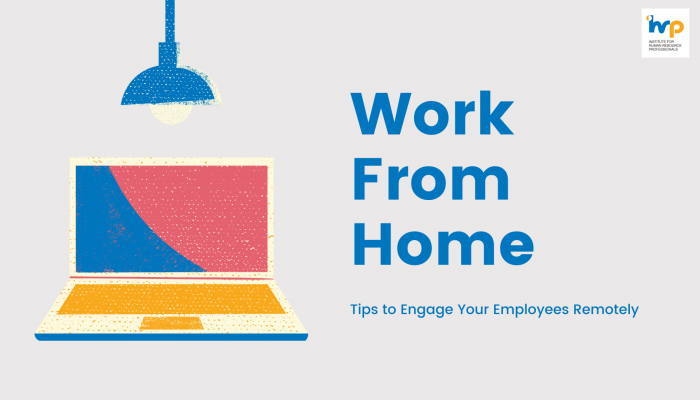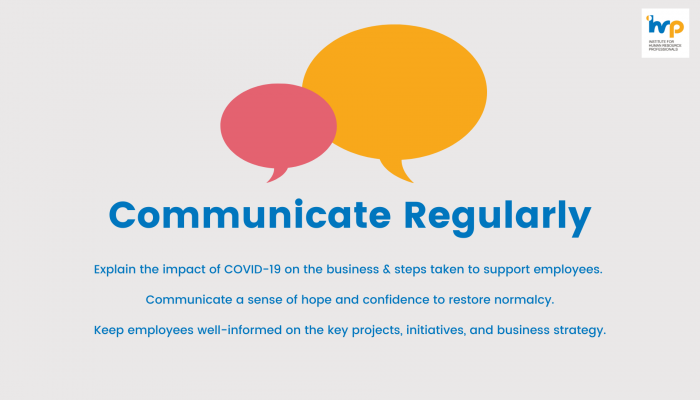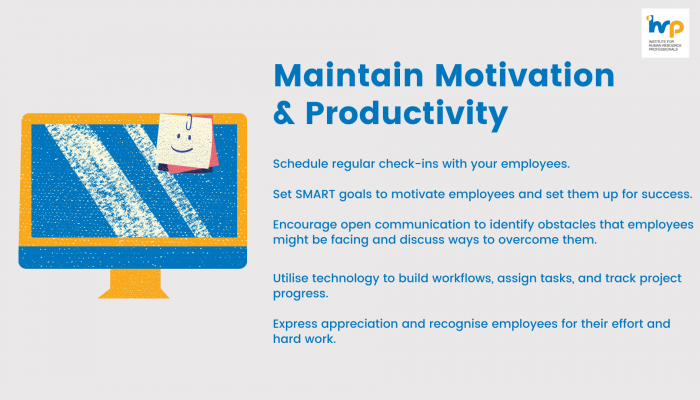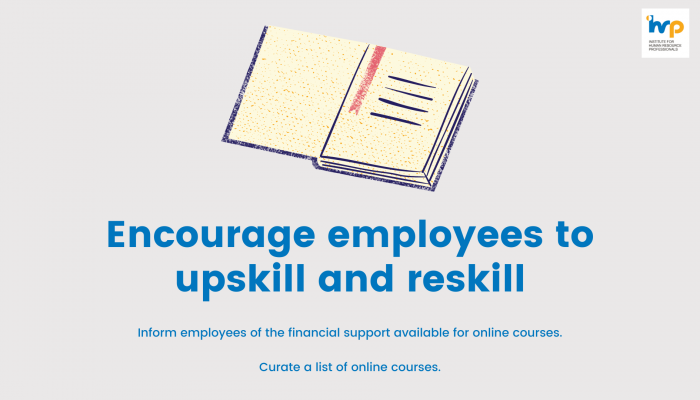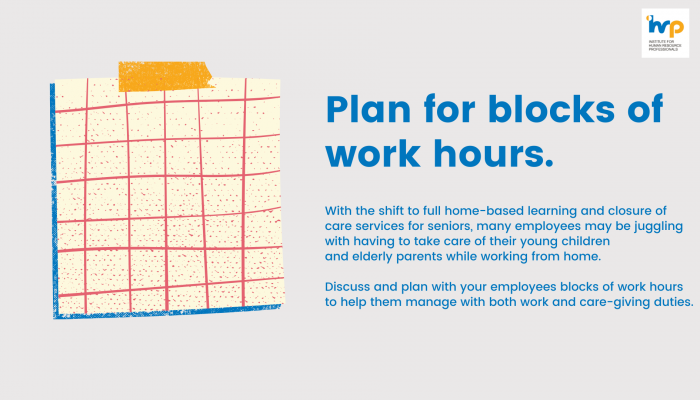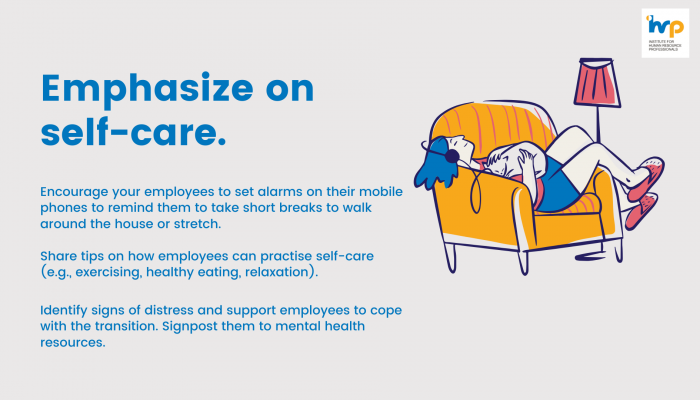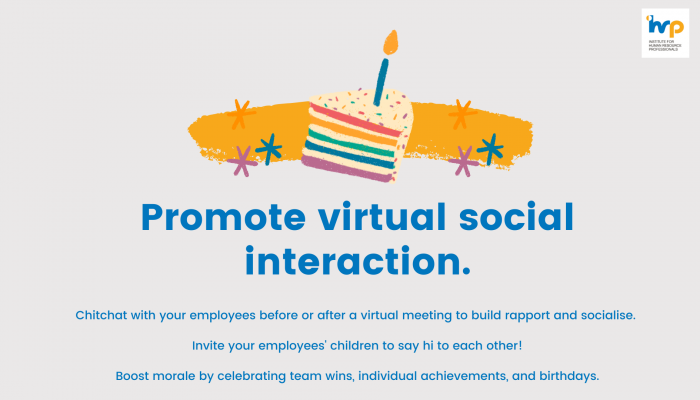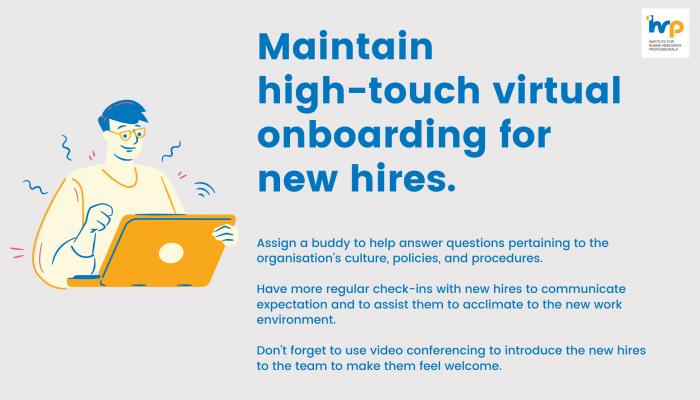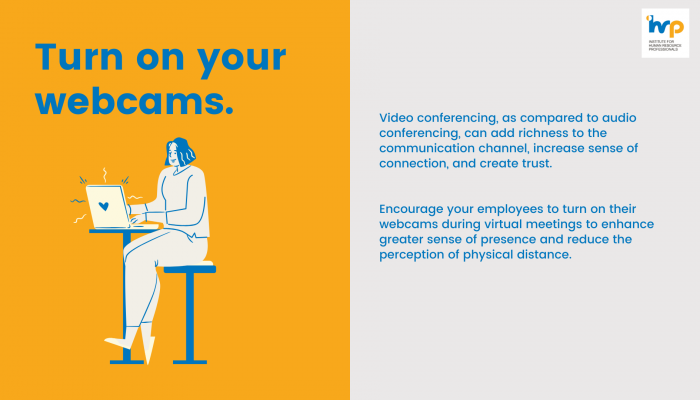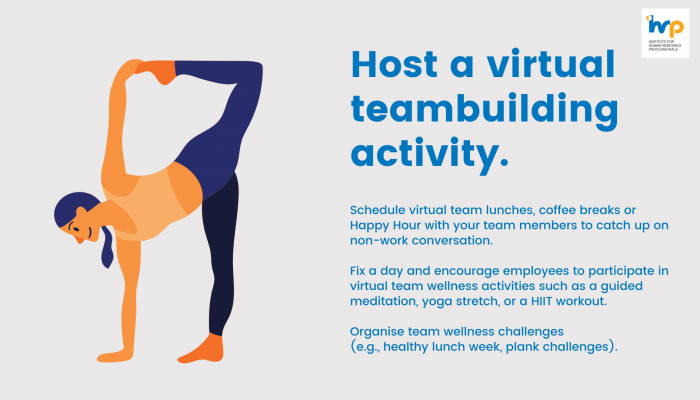5 Tips to Engage Your Employees Remotely
By IHRP Research & Insights
As the circuit breaker measures take effect and many workplaces are encouraged to implement work-from-home arrangements, what can you do to help your organisation navigate through this new way of working? We provide 5 tips on how you can sustain engagement and stay connected with your employees.
- Communicate regularly
Effective internal communication is the cornerstone of a highly engaged team and it is even more important when employees are not able to have face-to-face discussions. Regular communication not only foster transparency but also reduces employees’ uncertainty. Following are some ways you can facilitate communication within your organisation remotely.
- Keep employees well informed on the key projects, initiatives, and business strategy.
- In times of crisis, employees tend to look to leaders to help that understand the meaning of what has happened. Create a communication plan to explain to your employees how the pandemic will impact business as usual and the steps taken to support employees and operations.
- Provide a narrative that communicates a sense of hope and confidence to restore normalcy. For instance, acknowledge the uncertainty of the situation as it unfolds, emphasize on unity and solidarity (use ‘we’, ‘us’), encourage employees to share personal stories of how they have coped with the changes, and accentuate the organisation’s values (e.g., agility , resilience).
- Maintain motivation and productivity
Changes in the way of working can be unsettling for your employees. Support your employees to ensure they remain focused, maintain their productivity, and stay motivated.
- Schedule regular check-ins with your employees and use different modes of communication (e.g., video calls, emails, WhatsApp messages, phone calls).
- Be proactive in communicating performance expectations by setting SMART goals (specific, measurable, attainable, relevant, time-based) to motivate employees and set them up for success.
- Encourage open communication to identify obstacles that employees might be facing and discuss ways to overcome them.
- Maintain high-touch virtual onboarding for new hires by assigning a buddy to help answer questions pertaining to the organisation’s culture, policies, and procedures. Have more regular check-ins with new hires to communicate expectation and to assist them to acclimate to the new work environment. Don’t forget to use video conferencing to introduce the new hires to the team to make them feel welcome.
- Utilise technology (e.g., Planner in Microsoft Teams, Trello, Slack) to build workflows, assign tasks, and track project progress.
- Express appreciation and recognise employees for their effort and hard work.
- Encourage employees to upskill and reskill
While COVID-19 has brought the world to a standstill, it also provides an opportunity for employees to enhance their skills and develop new capabilities to meet the changing demands.
- Inform employees of the financial support that the organisation provides for online courses.
- Curate a list of online courses that your employees can attend to hone their existing skills or develop new capabilities.
- Encourage employees to attend online courses to develop new skills (Check out the Skills Framework for your sector).
- As COVID-19 may delay job interviews and impact hiring, consider developing talent within the organisation and help employees get the skills they need.
- Promote virtual social interaction
Making social connection gets more challenging during this period as employees are not able to chitchat around the workspaces or coffee machine like they used to do. Employees working from home may experience feelings of loneliness, isolation, and disconnection, which can lower engagement and productivity. Help your employees build connection by facilitating continued collaboration and social interaction.
- Video conferencing, as compared to audio conferencing, can add richness to the communication channel, increase sense of connection, and create trust. Encourage your employees to turn on their webcams during virtual meetings to enhance greater sense of presence and reduce the perception of physical distance.
- Mirroring the stop-and-chat in the corridor, chitchat with your employees before or after a virtual meeting to build rapport and socialise. You may even want to invite your employees’ children to say hi to each other!
- Encourage managers to schedule virtual team lunches, coffee breaks or Happy Hour with their team members to catch up on non-work conversation. Try some of these virtual teambuilding activities.
- Boost morale by celebrating team wins, individual achievements, and birthdays.
- Fix a day and encourage employees to participate in virtual team wellness activities such as a guided meditation, yoga stretch, or a HIIT workout. Organise team wellness challenges (e.g., healthy lunch week, plank challenges).
- Show that you care and empathise with your employees
With the shift to full home-based learning and closure of care services for seniors, many employees may be juggling with having to take care of their young children and elderly parents while working from home. Additionally, as the line between professional and personal time gets blurry, employees may find themselves putting longer hours than usual. Following are some ways you can support your employees’ well-being.
- Encourage your employees to set alarms on their mobile phones to remind them to take short breaks to walk around the house or stretch.
- Share tips on how employees can practise self-care (e.g., exercising, healthy eating, relaxation).
- Discuss and plan with your employees blocks of work hours to help them manage with both work and care-giving duties.
- Coping with the disruption resulted from COVID-19 can be emotionally charging and may take a toll on employee’s psychological well-being. HR plays a critical role in identifying signs of distress among the employees. Work together with the managers to discuss how to help employees to cope with the transition and signposting employees to mental health resources.
If you are looking for more tips on how to engage your employees, IHRP COVID-19 Taskforce has put together these resources to support you during this challenging period!



